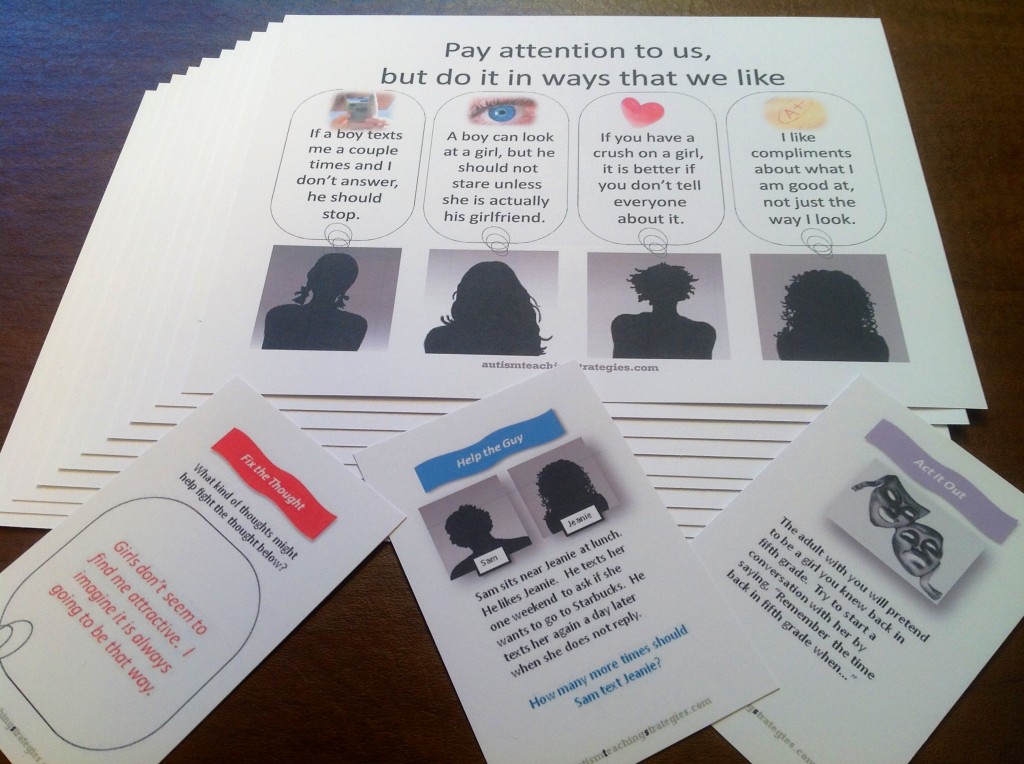
To download and print this resource, click here:
Relating to Girls Panels & Cards
To download the PowerPoint version of this resource (to project or show on computer), click here:
Relating to Girls, PowerPoint Version
This resource is also available in Polish.
This resource is also available in German.
Boys with autism face special challenges in understanding and relating to girls
In this blog post, I offer some basic background on issues affecting teenage boys on the autism spectrum pertaining to their relationships with girls, and then I provide some social skills teaching materials for mental health professionals, teachers and speech-language pathologists to use in their work.
Problem 1: Difficulties understanding the interests and perspectives of girls and women
Children on the autism spectrum have challenges with “theory of mind,” that is, understanding what other people might be thinking. This presents particular problems when a boy with high functioning autism is dealing with individuals of the opposite gender. (It is hard enough, after all, for males who do not have autism).
Problem 2: Difficulties with verbal and nonverbal elements of communication
With regard to nonverbal communication, when interacting with girls, boys on the autism spectrum have a tendency to make mistakes with eye contact and personal space. Eye contact errors fall into two categories. First, many boys with high functioning autism find it very difficult to look into the eyes of other people when they are talking. This can cause them a lot of anxiety and break their concentration. Second, boys who are attracted to girls might not understand the negative social impact of staring at girls in a conspicuous manner. Personal space errors can occur when a boy on the autism spectrum gets too close to a girl or touches her in an unwanted manner.
With respect to verbal communication, boys with high functioning autism face many challenges when communicating with girls. They might wish to compliment a girl, but they may not understand the unwritten social rules about bluntly complimenting a girl’s attractive features. Boys on the spectrum might find it overwhelmingly difficult to find common ground in conversation with a girls, and boys might consequently fall back on their preferred interests in conversation.
Problem 3: Difficulties with appearance and hygiene
Right around the time that boys on the autism spectrum may be first feeling attraction to girls, they are in the process of taking over numerous self-care tasks from their parents. Consequently, many teenage boys with ASD have problems with hygiene, attire and grooming. They may have dirty and unkempt hair. They may bathe infrequently or inadequately. Likewise, they often neglect dental hygiene. They may select clothing based on comfort or habit rather than fashion. All of these problems present enormous liabilities when relating to young females, who, compared to young males, are more inclined to be aware of hygiene, smell and appearance.
Problem 4: Fundamental challenges finding compatible romantic partners
Autism affects far more males than females. This, unfortunately, puts young men on the autism spectrum at a statistical disadvantage. Males with autism do, of course, often date and marry females who are not on the spectrum. However, young men with autism often have a special affinity for young women on the spectrum – but relatively few of these females with ASD are out there.
A note about young gay people on the spectrum:
In our work with young men with autism, we of course come into contact with males who are attracted to males. Please be aware that you can modify the materials below to address the needs of this population. And, by the way, there is a terrific, short autobiography by a man with Asperger’s who happens to be gay – Born on a Blue Day by Daniel Tammett.
How to use the free materials provided in this post:
The image below shows the teaching panels as they might appear if you placed them on the wall in a bulletin board fashion. You could also bind them together to create a simple, nine-page book.
The image below shows several of the cards. You can use these in individual, group or small class-size interventions. Here are some suggestions. First, you could arrange the cards into three piles by card type. Then, you could, by roll of dice, have participants pick from one of of three card types (roll of 1 or 2, or 3 or 4, or 5 or 6 determines which card is selected). Alternatively, shuffle the cards and have participants select them an random.
About role playing in the “Act it out” cards:
The majority of guidance counselors, psychotherapists, special education teachers and speech-language pathologists are females. Working with boys who are trying to learn to relate to girls, you have certain practical advantages if you are female. This allows you to play the role of the “girl” in the role plays I have set up in the “Act it out” cards.
About the “Fix the Thought” cards:
Here is a suggestion on how to use these cards. Introduce these cards by saying something like this: “Certain thoughts and beliefs can lead to all kinds of upsetting emotions and make these bad feelings much worse. If you can notice them and fight them, you can feel less upset.” Then, you, the adult, can try holding the card over your head and say, “Let’s pretend I am a person having this thought.” Then, you act out the role of someone having the thought, and ask the participants to give you advice and tell you what better alternative thoughts you might try.
I wish you well in your work helping boys on the autism spectrum to understand and relate to females.
Joel Shaul, LCSW
FYI: A great activity to go with this resource:
Using girl magazines and other media to help boys with ASD learn about girls
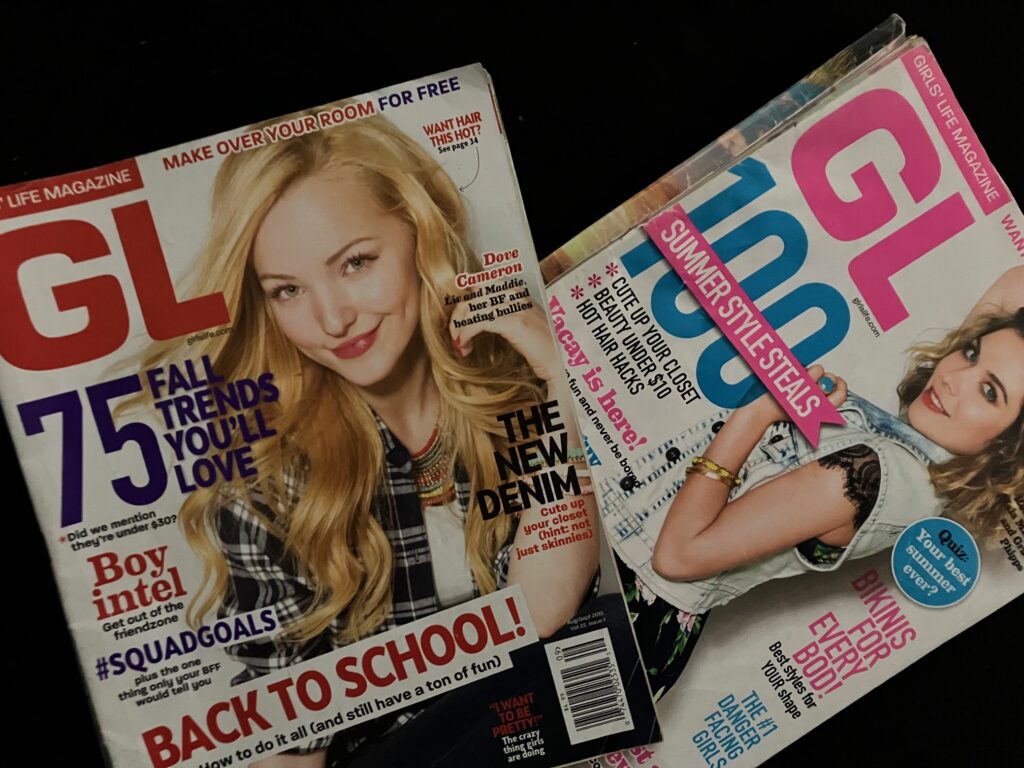
Don’t miss these other free social & emotional skills games, worksheets and teaching / therapy resources for children & teens with ASD:
Free social skills games & activities, social interaction skills for kids with ASD
Free social skills games & activities, communication / conversation skills for kids with ASD
Free social skills games & activities, emotional regulation skills for kids with ASD
Your comments on these resources are most welcome, and often helpful. Click HERE to send an email.

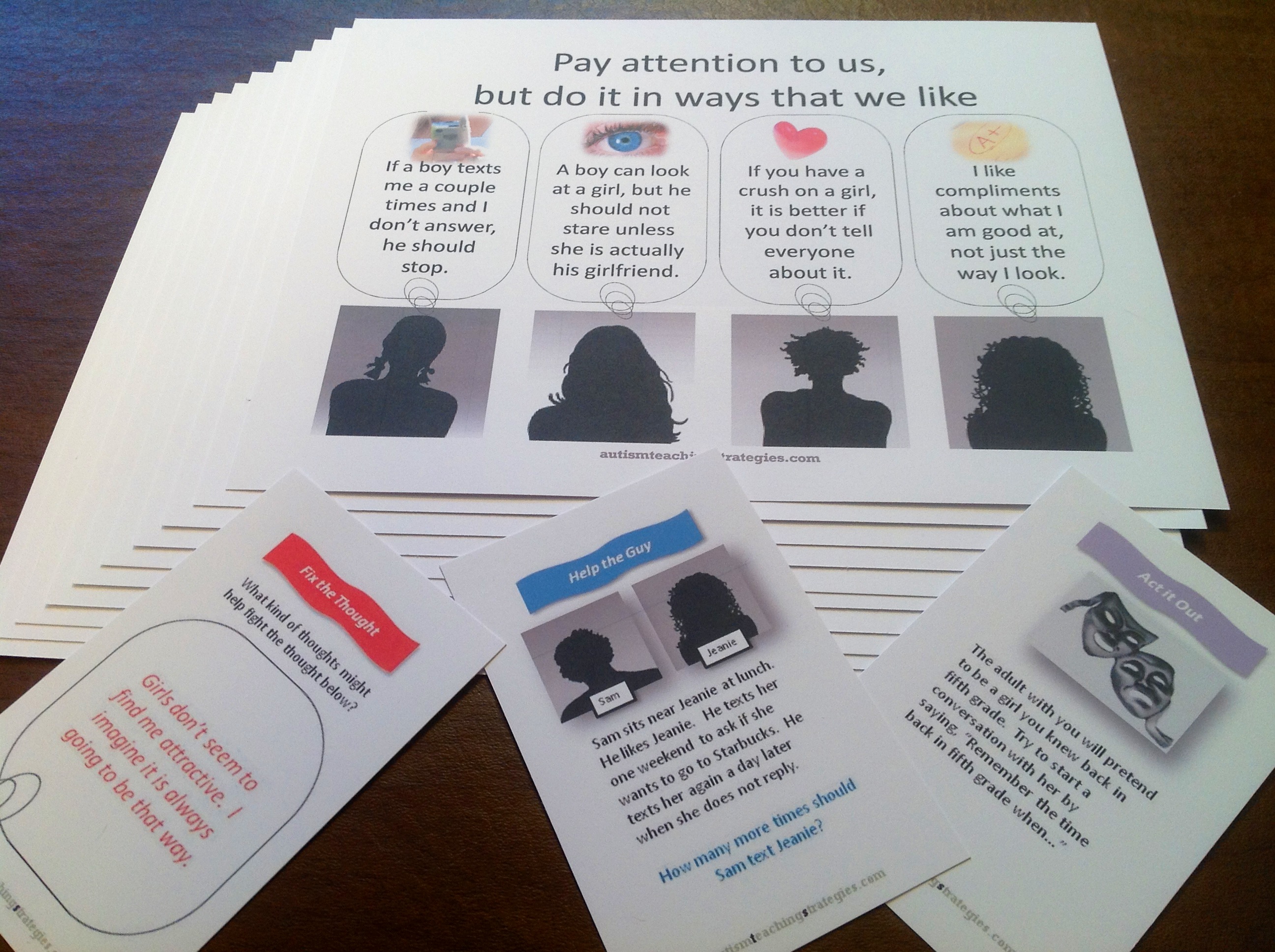
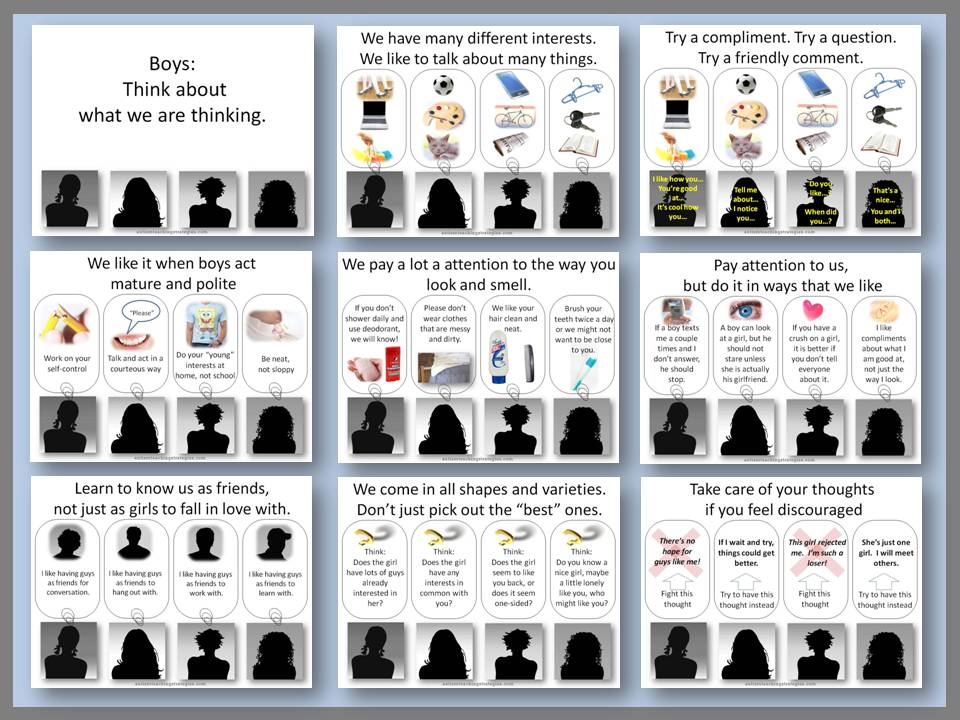

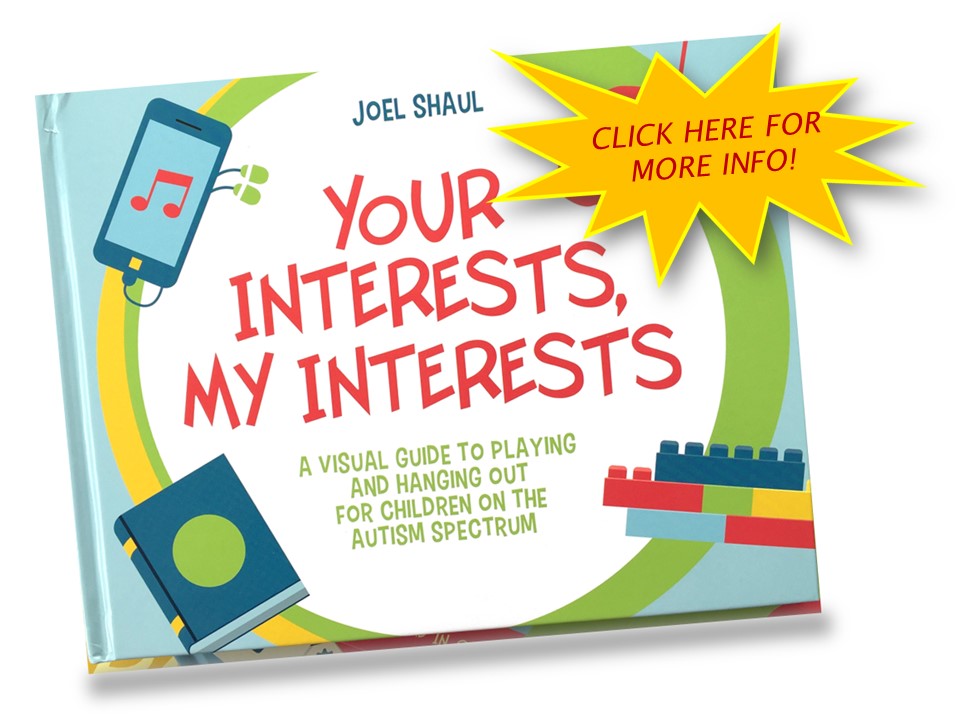

[…] Helping Boys Understand Girls […]
[…] Helping teen boys with high functioning autism to relate … – Helping teen boys with high functioning autism to relate to girls: Card game activity and social skills teaching materials… […]